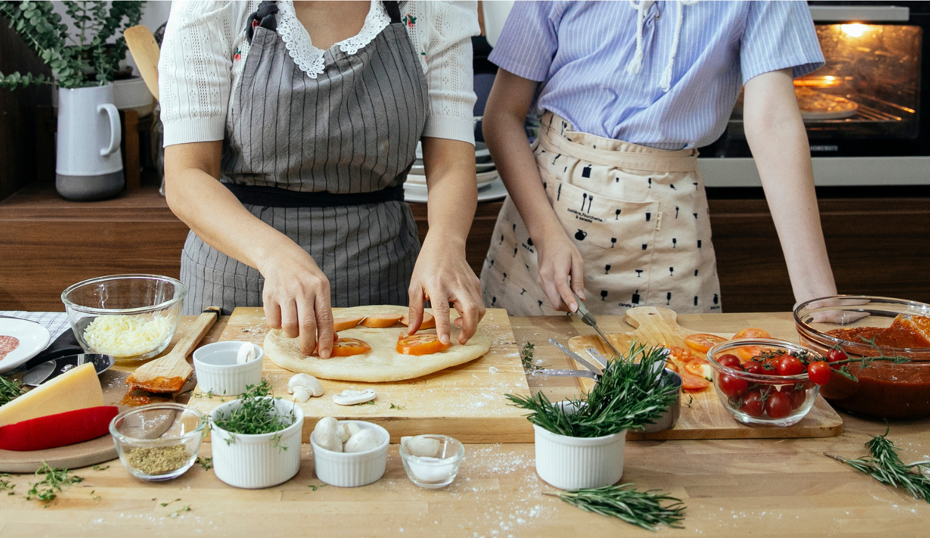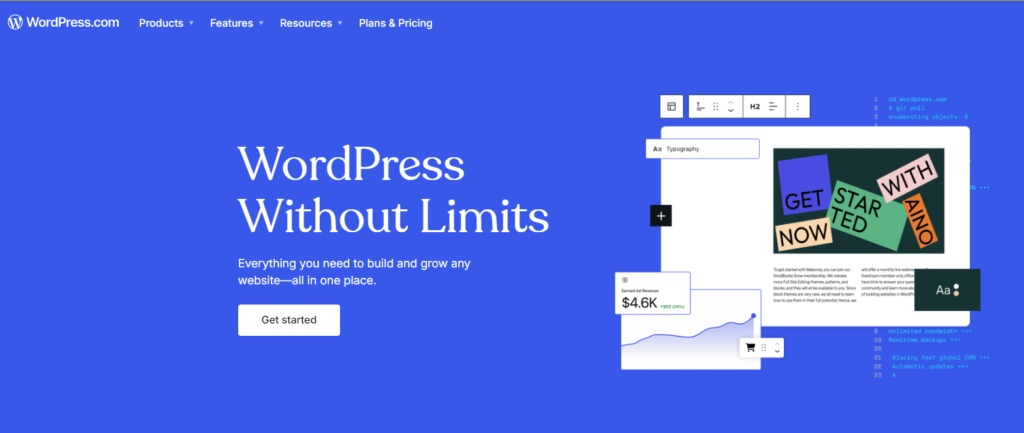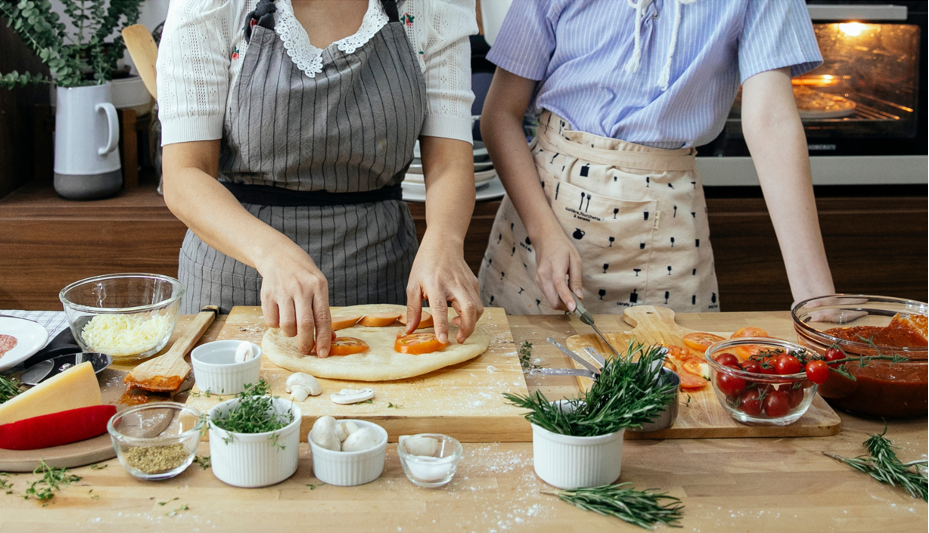
“Cooking is an expression of the land where you are and the culture of that place.” – Wolfgang Puck
Imagine waking up to the aroma of freshly baked bread, the sizzle of a perfectly seared steak, or the vibrant colors of a fresh salad. Now, imagine sharing these culinary delights with a community of food enthusiasts who can’t wait to try your recipes.
Welcome to the world of a subscription-based recipe website, where your kitchen becomes the heart of a thriving online community.
In this guide, we’ll explore how to turn your passion for cooking into a successful business, from selecting a unique niche to engaging your subscribers with mouth-watering content. Ready to embark on this delicious journey? Let’s get started!
TL;DR
- Craft a unique recipe website concept: Focus on a specific niche, like vegan cooking, gluten-free recipes, or international cuisine.
- Build a stunning website: Choose a user-friendly platform and design a visually appealing website that showcases your recipes beautifully.
- Create high-quality content: Develop mouthwatering recipes, detailed instructions, and captivating photography.
- Promote your website: Utilize social media, email marketing, and collaborations to reach your target audience.
- Offer valuable subscription benefits: Provide exclusive recipes, access to a community forum, and special discounts to incentivize subscriptions.
- Monetize your website: Generate revenue through subscription fees, affiliate marketing, and selling digital products.
What is a Subscription-Based Recipe Website?
A subscription-based recipe website is a platform where users pay a recurring fee to access exclusive content, features, and benefits. Think of it like a Netflix for food lovers, but instead of movies and TV shows, you’re getting access to a treasure trove of delicious recipes, culinary tips, and a community of passionate foodies.
Building Your Culinary Empire: A Step-by-Step Guide
1. Define Your Niche and Target Audience
The first step is to identify your culinary passion and target audience. What type of recipes do you excel at? What kind of people are you most passionate about reaching?
For example, if you’re a vegan chef, your website could focus on delicious plant-based recipes. If you’re a master baker, your website could feature decadent desserts and baking techniques.
2. Craft a Compelling Website Concept
Once you’ve defined your niche, it’s time to develop a unique website concept. What will set your website apart from the competition? Will you focus on a specific cuisine, dietary restrictions, or cooking style?
Consider these questions:
- What problem will your website solve?
- Will you provide quick and easy recipes for busy families, or will you offer gourmet dishes for experienced home cooks?
- What kind of community will you build?
- Will your website be a place for people to share their culinary creations, ask for advice, or participate in cooking challenges?
- What will your website’s personality be?
- Will it be fun and playful, sophisticated and elegant, or educational and informative?
3. Choose the Right Website Platform
Selecting the right platform is crucial for building a successful subscription-based recipe website. There are numerous options available, each with its own strengths and weaknesses.
Here are a few popular choices:

- WordPress: A highly customizable platform with a vast library of themes and plugins, making it ideal for creating a unique and feature-rich website. You can use plugins like WooCommerce to set up your subscription system.
- Wix: A user-friendly drag-and-drop website builder that’s perfect for beginners. It offers a wide range of templates and built-in features, including e-commerce capabilities for setting up subscriptions.
- Squarespace: Known for its beautiful templates and intuitive interface, Squarespace is a great choice for creating visually stunning websites. It offers built-in e-commerce features, including subscription options.
4. Design a Stunning Website
Your website’s design is crucial for attracting and retaining visitors. It should be visually appealing, user-friendly, and optimized for mobile devices.
Here are some essential design elements:
- High-quality photography: Use professional-looking photos to showcase your recipes and entice visitors. You can use tools like Canva or Adobe Photoshop to edit your photos and create visually appealing content.
- Clear and concise navigation: Make it easy for visitors to find the information they need. Use a clear menu structure and intuitive design to guide users through your website.
- Easy-to-read fonts: Choose fonts that are legible and visually appealing. Use a limited number of fonts to maintain consistency and avoid overwhelming the user.
- Responsive design: Ensure your website looks great on all devices. Use a website builder that offers responsive design features, or hire a web developer to ensure your website adapts to different screen sizes.
5. Create High-Quality Content
The heart of your subscription-based recipe website is your content. You need to create recipes that are both delicious and easy to follow.
Here are some tips for creating high-quality content:
- Focus on detail: Provide clear and concise instructions, including ingredient measurements, cooking times, and tips for success. Use a consistent format for your recipes and include detailed information to help users understand the process.
- Use captivating photography: Capture the beauty of your dishes with high-quality photos. Use natural light, a simple background, and arrange your food attractively. Experiment with different angles and perspectives to find the most flattering shots.
- Offer variety: Include a mix of recipes, from appetizers and main courses to desserts and drinks. Cater to different dietary needs and preferences, such as vegan, gluten-free, or dairy-free.
- Consider dietary restrictions: Offer recipes that cater to different dietary needs, such as vegan, gluten-free, or dairy-free. This will expand your reach and attract a wider audience.
6. Promote Your Website
Once you’ve created a website, it’s time to start promoting it to your target audience.
Here are some effective promotion strategies:
- Social media: Create profiles on platforms like Facebook, Instagram, and Pinterest and share your recipes, behind-the-scenes content, and website updates. Use relevant hashtags, engage with your followers, and run contests or giveaways to increase visibility.
- Email marketing: Build an email list and send out regular newsletters with new recipes, special offers, and website updates. Use a tool like Mailchimp or Constant Contact to manage your email list and create engaging newsletters.
- Collaborations: Partner with other food bloggers, chefs, or businesses to cross-promote your website. Reach out to influencers in your niche and offer to collaborate on recipes, content, or events.
- SEO optimization: Optimize your website for search engines to attract organic traffic. Use relevant keywords in your website content, meta descriptions, and image alt text. You can use tools like Google Search Console and SEMrush to track your website’s performance and identify areas for improvement.
7. Offer Valuable Subscription Benefits
To incentivize people to subscribe to your website, you need to offer valuable benefits.
Here are some ideas:
- Exclusive recipes: Provide subscribers with access to a library of exclusive recipes that aren’t available to the public. This could include seasonal recipes, special occasion dishes, or recipes that require advanced techniques.
- Community forum: Create a forum where subscribers can connect with each other, share their culinary creations, and ask for advice. This fosters a sense of community and encourages engagement.
- Special discounts: Offer subscribers exclusive discounts on your products or services. This could include discounts on e-cookbooks, meal plans, or online courses.
- Early access to new content: Give subscribers early access to new recipes, blog posts, or other content. This provides subscribers with a sense of exclusivity and rewards their loyalty.
8. Monetize Your Website
There are several ways to monetize a subscription-based recipe website.
Here are some common methods:
- Subscription fees: Charge a monthly or annual fee for access to your website’s premium content. You can use a platform like Stripe or PayPal to process payments.
- Affiliate marketing: Promote products or services related to cooking and earn a commission on sales. Partner with brands that align with your niche and audience.
- Selling digital products: Create and sell digital products, such as e-cookbooks, meal plans, or online courses. Use a platform like Gumroad or Teachable to sell and deliver your digital products.
9. Build a Strong Community
“Community is not a place, it’s a feeling.” – Unknown
A strong community is essential for the success of any subscription-based recipe website. Encourage interaction and engagement among your subscribers.
Here are some tips for building a strong community:
- Respond to comments and questions: Show your subscribers that you value their feedback. Engage with your audience and create a welcoming environment.
- Host online events: Organize virtual cooking classes, Q&A sessions, or recipe challenges. This provides opportunities for interaction and builds excitement.
- Create a sense of belonging: Make your website a place where subscribers feel welcome and connected. Use a forum or social media group to facilitate communication and build relationships.
10. Continuously Improve
The world of food is constantly evolving, and your website should evolve with it.
Here are some ways to continuously improve your website:
- Stay up-to-date on trends: Keep an eye on the latest culinary trends and incorporate them into your content. Follow food blogs, magazines, and social media accounts to stay informed.
- Gather feedback from your subscribers: Ask for their opinions on your recipes, website design, and features. Use surveys, polls, or feedback forms to collect valuable insights.
- Experiment with new ideas: Don’t be afraid to try new things and see what works best for your audience. Test different formats, features, and strategies to optimize your website.
Beyond the Recipe: The Importance of Nutrition
As you build your recipe website, remember that your audience is looking for more than just delicious dishes. They’re also interested in healthy eating and making informed choices about their food.
Consider incorporating nutritional information into your recipes, or even creating a dedicated section on your website that focuses on healthy eating.
For example, you could create a series of recipes that are high in protein, a nutrient that’s essential for building muscle, maintaining energy levels, and feeling full.
Here’s a helpful video on the importance of protein: Eat More Protein (Because Sugar Is Poison?)
For More Free Videos, Subscribe to the Rhodes Brothers YouTube Channel.
By offering recipes that are both delicious and nutritious, you can create a website that’s truly valuable to your audience.
Actionable Steps and Direct Advice
Here’s a breakdown of practical, step-by-step strategies for starting a subscription-based recipe website, catering to different experience levels:
For Beginners:
- Start with a Simple Niche: Choose a narrow focus like “Quick & Easy Weeknight Meals” or “Vegan Desserts.”
- Use a User-Friendly Platform: Consider Wix or Squarespace for their ease of use and built-in features.
- Focus on Quality Over Quantity: Start with 10-15 amazing recipes you’re passionate about.
- Promote on Social Media: Share your recipes on platforms like Instagram and Pinterest, using relevant hashtags.
- Offer a Free Recipe: Lure potential subscribers with a free, enticing recipe to showcase your skills.
For Intermediate Users:
- Develop a Unique Website Concept: Think about your target audience’s needs and offer a unique solution, like “Gluten-Free Recipes for Busy Families.”
- Invest in High-Quality Photography: Use a good camera or hire a professional photographer to make your recipes visually appealing.
- Build an Email List: Use a tool like Mailchimp to collect email addresses and send out newsletters with exclusive content.
- Collaborate with Other Food Bloggers: Reach out to other bloggers in your niche for cross-promotion.
- Offer a Free Trial: Give potential subscribers a limited-time free trial to experience your premium content.
For Advanced Users:
- Create a Detailed Business Plan: Outline your target audience, marketing strategies, revenue projections, and long-term goals.
- Choose a Customizable Platform: Consider WordPress with a subscription plugin like WooCommerce for greater control and flexibility.
- Invest in SEO Optimization: Use tools like SEMrush to research keywords and optimize your website for search engines.
- Develop a Content Marketing Strategy: Create a consistent content calendar with a mix of recipes, blog posts, and videos.
- Offer Multiple Subscription Tiers: Provide different levels of access with varying benefits to cater to diverse needs.
Common Mistakes to Avoid
- Not defining a clear niche: Trying to appeal to everyone will likely result in appealing to no one. Focus on a specific niche and build a loyal following.
- Solution: Identify your passion and target audience. What problem can you solve for them with your recipes?
- Creating low-quality content: Your recipes should be delicious, easy to follow, and visually appealing. Don’t skimp on quality.
- Solution: Test your recipes multiple times, write clear instructions, and invest in high-quality photography.
- Neglecting website optimization: Make sure your website is optimized for search engines to attract organic traffic.
- Solution: Research relevant keywords, use them in your content, and optimize your website for mobile devices.
- Ignoring your community: Engage with your subscribers, respond to their questions, and create a sense of belonging.
- Solution: Build a forum or social media group, host online events, and respond to comments and questions promptly.
- Not Offering Valuable Subscription Benefits: Subscribers need a reason to pay for your content.
- Solution: Provide exclusive recipes, access to a community forum, special discounts, and early access to new content.
- Not Monetizing Your Website Effectively: Explore various monetization strategies to maximize your revenue.
- Solution: Use a combination of subscription fees, affiliate marketing, and selling digital products.
- Not Adapting to Trends: The food world is constantly evolving. Stay up-to-date on trends and incorporate them into your content.
- Solution: Follow food blogs, magazines, and social media accounts to stay informed. Experiment with new recipes and techniques.
- Not Gathering Feedback: Ask for feedback from your subscribers to improve your website and content.
- Solution: Use surveys, polls, or feedback forms to collect valuable insights.
By avoiding these common mistakes and implementing the actionable steps outlined above, you can increase your chances of success in the exciting world of subscription-based recipe websites.
Frequently Asked Questions
Q: How much does it cost to start a subscription-based recipe website?
A: The cost of starting a subscription-based recipe website can vary depending on the platform you choose, the features you include, and the amount of time and effort you invest. However, it’s possible to start a website for a relatively low cost, especially if you choose a free or low-cost platform and do some of the work yourself.
Q: How do I get people to subscribe to my website?
A: Promote your website through social media, email marketing, collaborations, and SEO optimization. Offer valuable subscription benefits, such as exclusive recipes, community access, and special discounts.
Q: How do I make money from my subscription-based recipe website?
A: Generate revenue through subscription fees, affiliate marketing, and selling digital products. Focus on providing high-quality content and building a loyal community to maximize your earnings.
Q: What are some popular subscription-based recipe websites?
A: Some popular subscription-based recipe websites include Blue Apron, HelloFresh, and Dinnerly. These websites offer a variety of meal kits and recipes, catering to different dietary needs and preferences.
Q: What are some tips for taking beautiful food photos?
A: Use natural light, choose a simple background, and arrange your food attractively. Experiment with different angles and perspectives to find the most flattering shots.
Q: How do I create a recipe website that is mobile-friendly?
A: Choose a website platform that offers responsive design, and ensure that your website looks great on all devices. Use a mobile-first approach when designing your website, prioritizing the user experience on smaller screens.
Q: What are some tools that can help me manage my subscription-based recipe website?
A: Tools like Mailchimp for email marketing, Canva for graphic design, and Google Analytics for website tracking can help you manage your website effectively.
Q: How do I create a community around my recipe website?
A: Encourage interaction and engagement among your subscribers by responding to comments and questions, hosting online events, and creating a sense of belonging.
Q: What are some tips for writing engaging recipe descriptions?
A: Use vivid language to describe the flavors and textures of your dishes. Highlight the unique ingredients or techniques used in your recipes. Include a brief story or anecdote about the inspiration behind the recipe.
Q: How do I stay motivated when building a subscription-based recipe website?
A: Remember your passion for cooking and your desire to share your culinary creations with the world. Set realistic goals and celebrate your successes along the way.
Ready to Cook Up Your Culinary Empire?
Starting a subscription-based recipe website is a delicious way to turn your passion into profit. Remember, it’s all about finding your niche, creating amazing content, and building a community around your culinary expertise.
Here are the key takeaways to get you started:
- Define your niche: Focus on a specific type of recipe or audience to stand out from the crowd.
- Build a stunning website: Choose a user-friendly platform and design a visually appealing website that showcases your recipes beautifully.
- Create high-quality content: Develop mouthwatering recipes, detailed instructions, and captivating photography.
- Promote your website: Utilize social media, email marketing, and collaborations to reach your target audience.
- Offer valuable subscription benefits: Provide exclusive recipes, access to a community forum, and special discounts to incentivize subscriptions.
- Monetize your website: Generate revenue through subscription fees, affiliate marketing, and selling digital products.
Don’t wait another minute! Start building your culinary dream today. Choose your niche, pick a platform, and create your first amazing recipe.
Ready to take your recipe website to the next level? Join us on the Rhodes Brothers YouTube Channel for the latest videos and information to help you succeed!
Thanks for joining us today! We hope this article has inspired you to start your own subscription-based recipe website. Happy cooking!
Resource List
Books:
- “The Lean Startup” by Eric Ries: A practical guide to building successful businesses, emphasizing iterative development and customer feedback.
- “The Art of SEO” by Eric Enge, Stephan Spencer, Jessie Stricchiola, and Rand Fishkin: A comprehensive guide to search engine optimization, crucial for attracting organic traffic.
- “Food Photography: From Snapshots to Great Shots” by Nicole S. Young: A guide to taking professional-looking food photos, essential for visual appeal.
- “The Complete Guide to Email Marketing” by Chad White: A comprehensive guide to email marketing strategies, for building an engaged audience.
- “The 7 Habits of Highly Effective People” by Stephen Covey: A classic guide to personal effectiveness and leadership, applicable to running a business.
- “The Power of Habit” by Charles Duhigg: A guide to understanding and changing habits, relevant for building consistent routines.
- “The Lean Entrepreneur” by Brant Cooper and Patrick Vlaskovits: A guide to building successful startups, offering practical advice for entrepreneurs.
- “The E-Myth Revisited” by Michael E. Gerber: A guide to building a successful business, emphasizing the importance of systems and delegation.
- “The Personal MBA” by Josh Kaufman: A guide to acquiring the essential knowledge and skills needed to succeed in business, a comprehensive resource.
- “The 10X Rule” by Grant Cardone: A guide to achieving massive success, emphasizing the importance of setting ambitious goals.
- “The 5 Second Rule” by Mel Robbins: A guide to overcoming procrastination and taking action, helpful for staying motivated.
- “Salt, Fat, Acid, Heat” by Samin Nosrat: A guide to mastering the fundamentals of cooking, focusing on essential elements of flavor.
- “The Complete Cookbook” by America’s Test Kitchen: A comprehensive cookbook with recipes for every occasion, a valuable resource for recipe inspiration.
- “The Joy of Cooking” by Irma S. Rombauer, Marion Rombauer Becker, and Ethan Becker: A classic cookbook with recipes that have been passed down for generations, a time-tested resource.
- “The Food52 Cookbook” by Amanda Hesser and Merrill Stubbs: A collection of recipes from the popular food website Food52, offering diverse culinary inspiration.
- “The America’s Test Kitchen Family Cookbook” by America’s Test Kitchen: A cookbook filled with family-friendly recipes, perfect for catering to a broader audience.
Blogs:
- Food52: A popular food website with recipes, articles, and community forums.
- Serious Eats: A website focused on in-depth food writing, recipes, and technique guides.
- The Kitchn: A website offering practical advice and recipes for home cooks.
- Smitten Kitchen: A blog featuring approachable recipes and beautiful food photography.
- Pinch of Yum: A blog with a focus on easy and delicious recipes for everyday meals.
- Cookie and Kate: A blog featuring healthy and wholesome recipes with a focus on vegetarian and vegan options.
- Minimalist Baker: A blog featuring simple and healthy recipes with minimal ingredients.
- The Pioneer Woman: A blog by Ree Drummond featuring home-style recipes and stories from her ranch life.
- The Kitchn: A blog offering practical advice and recipes for home cooks.
- A Cozy Kitchen: A blog featuring comforting and delicious recipes with a focus on seasonal ingredients.
Podcasts:
- The Splendid Table: A radio show and podcast featuring food stories, recipes, and interviews with chefs and food experts.
- Spilled Milk: A podcast featuring two friends discussing food, pop culture, and life.
- The Food Healers: A podcast featuring interviews with nutritionists, chefs, and food experts on topics related to healthy eating.
- The Gastropod: A podcast exploring the science and history of food.
- The Food Lab Radio: A podcast based on the popular website Serious Eats, featuring in-depth discussions about cooking techniques.
- The Minimalist Baker Podcast: A podcast featuring interviews with chefs, nutritionists, and other food experts, with a focus on healthy eating.
- The Sporkful: A podcast exploring the world of food, featuring interviews with chefs, food writers, and other food experts.
Tools:
- Mailchimp: An email marketing platform for building and managing email lists, sending newsletters, and tracking results.
- Canva: A graphic design platform for creating visually appealing content, including social media graphics, website banners, and recipe cards.
- Adobe Photoshop: A professional image editing software for enhancing photos and creating visually appealing content.
- Google Search Console: A tool for tracking your website’s performance in Google Search, identifying areas for improvement.
- SEMrush: A suite of SEO tools for researching keywords, analyzing competitors, and tracking website performance.
- WooCommerce: A WordPress plugin for creating an online store, including subscription options.
- Stripe: A payment processing platform for accepting online payments, including recurring subscriptions.
- PayPal: A payment processing platform for accepting online payments, offering a range of payment options.
- Gumroad: A platform for selling digital products, including e-cookbooks, meal plans, and online courses.
- Teachable: A platform for creating and selling online courses, ideal for expanding your offerings.
- WordPress: A popular content management system for creating websites, offering flexibility and customization options.
- Wix: A user-friendly website builder for creating websites, offering ease of use and built-in features.
- Squarespace: A website builder for creating visually appealing websites, offering intuitive design features.
- Google Analytics: A tool for tracking website traffic, understanding user behavior, and identifying areas for improvement.
Courses:
- Skillshare: An online learning platform offering courses on a wide range of topics, including food photography, recipe development, and website design.
- Udemy: An online learning platform offering courses on a wide range of topics, including cooking, nutrition, and entrepreneurship.
- Coursera: An online learning platform offering courses from top universities and institutions, including courses on food science, culinary arts, and business management.
- edX: An online learning platform offering courses from top universities and institutions, including courses on food science, culinary arts, and business management.
Starting a Subscription-Based Recipe Website Cheat Sheet
- Define your niche and target audience.
- Craft a compelling website concept.
- Choose the right website platform.
- Design a stunning website.
- Create high-quality content.
- Promote your website.
- Offer valuable subscription benefits.
- Monetize your website.
- Build a strong community.
- Continuously improve.
- Incorporate nutritional information.
- Use tools for website management, marketing, and content creation.
- Explore online courses for further learning.






